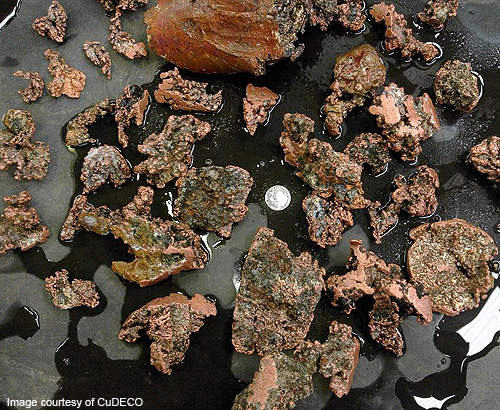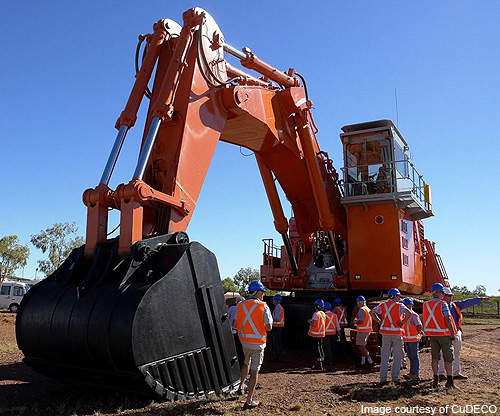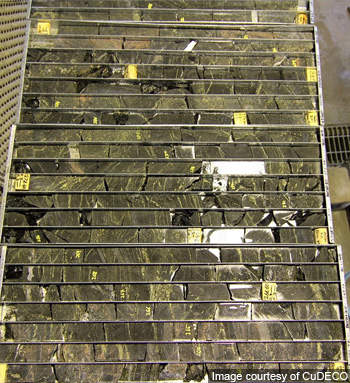The Rockland copper project is located approximately 17km west of Cloncurry in north-west Queensland, Australia. Owned by CuDECO, the 1,600ha mine is advancing towards production.
Construction began in the first quarter of 2012 and open pit operations began in late 2012. The project has been budgeted at $200m. The mine is estimated to operate for approximately ten to 20 years.
The first concentrate was produced in July 2016 and was delivered to China Oceanwide International Investment in August 2016. The mine was officially opened in October 2016.
Rockland copper project reserves
As of December 2015, the mine contains 28Mt of proven and probable reserves, grading at 0.71% of copper (Cu), 0.14%g/t of gold (Au), 6.7% of magnetite, 357ppm of cobalt and 0.90% of CuEq.
Geology
The mine lies within the Eastern Succession of the Proterozoic-aged Mt. Isa Inlier located in the Duck Creek Anticline. The deposit is underlain by units of the east-south-east trending overhand jaspilite and mitakoodi quartzite that are of middle Proterozoic age. Interlayered structures of limestone, sandstone, quartzite, jaspilite and calc silicate are hosted in the overhand jaspilite. In certain areas, the Proterozoic basement is covered by surficial deposits of tertiary to recent aged alluvium and colluviums.
The mineralised lodes are hosted within a metamorphosed sedimentary complex with an east south east strike. The complex includes fine quartz and quartz magnetite sandstone, quartzite, siltstone, limestone and calcareous units, including scapolitic siltstone. Copper mineralisation is largely associated with intrusive medium grained dolerite that is prominent across the area and appears to be conformable with the sediments.
Copper mineralisation occurs in a sequence of partially parallel linear zones with a west-north-west trend. 12 Cu-Co-Au orebodies have been identified to date. The two most prominent mineralised bodies include Las Minerale and Rocklands South. Both the structures contain ore grade and thick copper mineralisation over strike lengths of hundreds of metres.
The Las Minerale structure, which measures up to 50m in thickness, is highly mineralised up to a strike length of 700m. Oxidation at Las Minerale has been seen at vertical depths of more than 100m. The central part of Las Minerale hosts prominent polymict breccias.
The mineralisation is associated with local alteration of biotite, actinolitic amphibole, red feldspar magnetite, calcite and silica. Substantial evidence of planar joints and fractures is available across the prospect area. The joints and fractures have served as dilatant channel paths to fluids that have metamorphosed and mineralised the rocks.
Mining and processing
The mine is expected to annually produce three million tons of ore from four open pits. Mining is carried out by standard open pit methods, including excavators and trucks. Seven Hitachi EX-1900 excavators are used. Production includes copper / gold, cobaltic-pyrite, native copper and magnetite concentrate products.
The 3Mtpa processing plant is equipped with circuits for recovering the native copper metal and conventional flotation circuits to treat supergene and primary sulphide zones. The plant for the native copper circuit has high-pressure grinding rolls (HPGR), a German crushing technology that allows clean separation of the gangue material from the native ore. Following the HPGR and wet screening alljig, a high-efficiency jig from allmineral is used for clean separation. A separate rate of 99% has been witnessed with the alljig.
Rockland drilling
A major drilling programme at the project began in late 2008. In order to outline the ore structures at Rockland, it was estimated that approximately 300km of drilling would be required. By the end of March 2010, 268km of drilling was completed. An additional 18km of infill drilling was completed at the main ore body between March and December 2010. The current drilling is targeted at low-grade zones.
Financing
Cudeco secured $25m in funding from an unidentified Hong Kong-based resources company for the mine development. As part of a MoU, the company agreed to issue 6.25 million new shares, at $4 a share to the firm.
CuDeco also received a $30m investment from a UK-based institutional investor for concluding the construction and commissioning of the mine.
Contractors
The contract for the supply of the 3Mtpa processing plant was awarded to Sinosteel in March 2011. Sinosteel supplied all components and structures of the plant. China Nerin Engineering has been appointed as the independent consultant to the project.
The preliminary studies for the project were conducted by Lycopodium Minerals, a Brisbane-based engineering consultancy that is also expected to be the construction management contractor of the project.
CuDeco contracted IFS to implement applications for visibility and control of its mining operations at the plant in December 2012.










